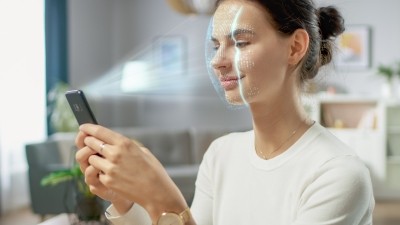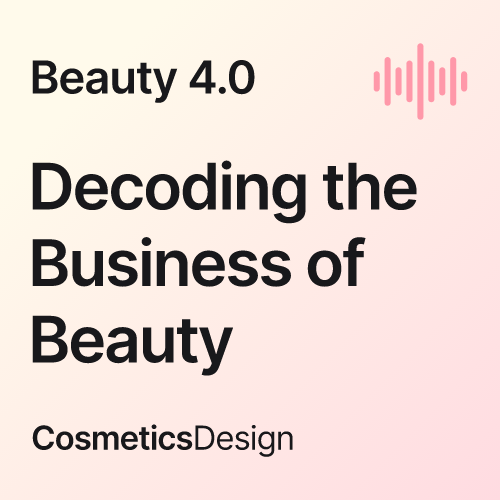‘Unrestricted experimentation’: What investments in temporary tattoo printers tell us about how beauty is changing
![Investments in temporary tattoo printing technology by beauty bigwigs hint on the future of beauty. [LG H&H / Imprintu]](/var/wrbm_gb_food_pharma/storage/images/_aliases/wrbm_large/publications/cosmetics/cosmeticsdesign-asia.com/headlines/market-trends/why-beauty-giants-are-investing-in-temporary-tattoo-technology/16246165-1-eng-GB/Why-beauty-giants-are-investing-in-temporary-tattoo-technology.jpg)
On February 27, K-beauty titan LG H&H unveiled Imprintu, a portable temporary tattoo printer at the 2023 Mobile World Congress (MWC) ahead of its launch in the second quarter of this year.
The handheld device allowed users to choose images and print temporary tattoos through an app. It uses vegan ink to ‘print’ tattoos that last around 24 hours. According to the firm, it can print on both skin and clothes.
This followed the news that beauty giant L'Oréal acquired a minority stake in South Korean tech start-up, Prinker, which has developed a range of digital temporary tattoo printers.
The interest in semi-permanent tattoos stems from post-COVID-19 desire for fun and experimentation, mostly driven by younger consumers.
“Post-pandemic beauty is all about indulgence, creativity, authenticity – unrestricted experimentation,” said Taryn Hoffman beauty & wellness strategist at trend forecasting agency, Fashion Snoops.
She highlighted the resurgence of face stickers or stick-on tattoos synonymous with late-nineties and early-noughties fashion. This behaviour is observed not just in Gen Zs, but also in younger millennials who may also be craving the nostalgia of such kitsch styles.
“We’re seeing things like face stickers and glittery tattoos – from the 90s and early 2000s – coming back. But the consumers may be looking for something that lasts a bit longer than just one night,” said Hoffman.
“I think brands are investing in that to give the consumers that option of fun, to speak to their desire for experimentation and creativity. These temporary tattoo printers are an evolution of incorporating tech and having more customisation and personalisation.”
Metaversal influence
Developments in Web3.0 and the metaverse have spurred the desire for ephemeral experimentation.
Hoffman highlighted the phenomenon of video games like Nintendo’s social simulator Animal Crossing, which became wildly popular during COVID-19.
Naturally, many companies took the opportunity to use it as a platform to connect with consumers, including KFC, Singapore’s Sentosa island, and well as a host of fashion and beauty brands. For instance, Givenchy Beauty partnered with Animal Crossing to offer Givenchy-inspired beauty look for players’ avatars.
While Animal Crossing’s popularity declined as the world moved away from movement restrictions and lockdowns, the idea of virtual meeting spaces has only begun to gain traction.
In January, social networking app Bondee blew up, topping app store charts across Asia. Today, the app has over five million downloads on the Google Play store.
Bondee was described as “a virtual plaza for you and your closest friends to hang out authentically”, where people can chat with friends, share status updates and decorate their own virtual rooms.
Underpinning the hype around Bondee was the ability to create your own unique avatar with a plethora of fashion and cosmetic options.
Users could save avatar looks and change them at the drop of a hat based on their real-time activity (like pyjamas for bedtime), their mood, or aesthetic preference of the minute. Could these options be influencing fashion and beauty in the physical world?
“If you’re using an app, you can just change [your avatar’s] appearance while you’re communicating with your friends. So, you can imagine, [temporary tattoo printers] help blend the digital and physical with what’s possible and looking at where we can blend the lines,” said Hoffman.
“Consumers are looking for something non-permanent that can kind of fit whatever aesthetic they're feeling for that day. Maybe one day they have a feeling for very light makeup, another it’s the grunge, edgy trend. They want to be able to have that duplicity and liveliness of being able to do whatever they feel like.”
More innovation in makeup
Concurrently, the developments made with temporary tattoo printers are influencing makeup applications.
Hoffman noted that semi-permanent makeup services have been growing in popularity and could drive the need for similar treatments that can be done at home.
In January, L’Oréal debuted Brow Magic at the 2023 Consumer Electronics Show (CES) in Las Vegas. Brow Magic was a handheld, electronic brow makeup applicator developed with Prinker.
“We’ve already seen consumers getting makeup tattoos like semi-permanent eyeliner or eyebrows. So, this can easily lead to more innovation in semi-permanent makeup. For instance, you can just have a certain eyeliner look for three weeks instead of longer,” said Hoffman
She concluded: “This is going to show us what else is possible with makeup.”
![Modules is aims to democratise personalised skin care with prescription-level active ingredients. [Modules]](/var/wrbm_gb_food_pharma/storage/images/_aliases/wrbm_medium/publications/cosmetics/cosmeticsdesign-asia.com/article/2023/05/10/modules-aims-to-democratise-personalised-prescription-skin-care/16372955-1-eng-GB/Modules-aims-to-democratise-personalised-prescription-skin-care.jpg)
![[Aesop]](/var/wrbm_gb_food_pharma/storage/images/_aliases/wrbm_medium/publications/cosmetics/cosmeticsdesign-asia.com/headlines/brand-innovation/updates-from-l-oreal-sk-ii-la-prairie-and-more-top-beauty-brands/16389995-1-eng-GB/Updates-from-L-Oreal-SK-II-La-Prairie-and-more-top-beauty-brands.jpg)
![A round-up of the recent trend developments in the Asia Pacific beauty and personal care market. [Fekkai]](/var/wrbm_gb_food_pharma/storage/images/_aliases/wrbm_medium/publications/cosmetics/cosmeticsdesign-asia.com/headlines/market-trends/what-s-trending-the-most-read-stories-on-apac-beauty-market-and-consumer-insights18/16313671-1-eng-GB/What-s-trending-The-most-read-stories-on-APAC-beauty-market-and-consumer-insights.jpg)













